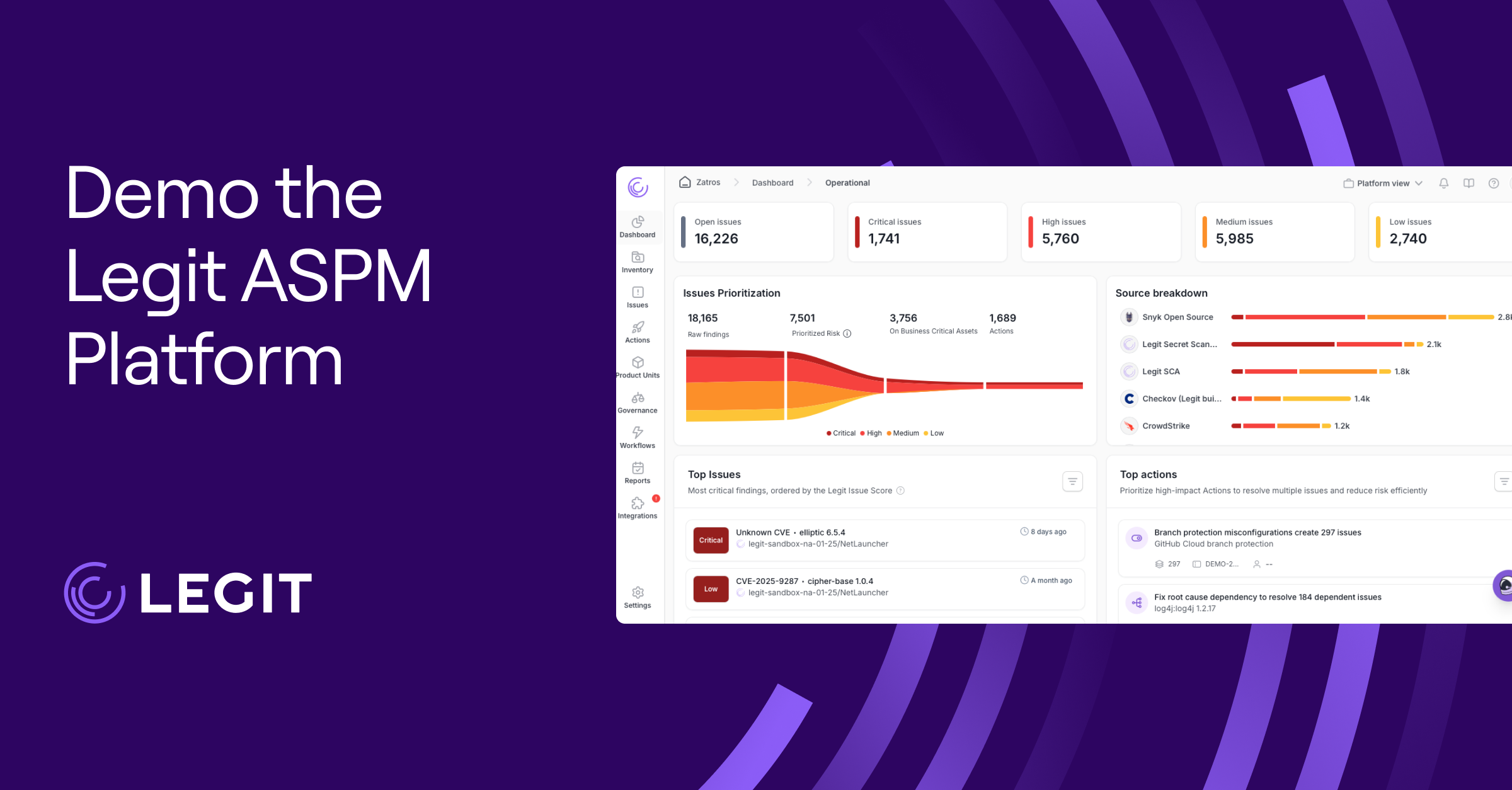Every organization that builds or runs software needs guardrails to keep applications safe. An application security policy provides that framework—it defines the standards, controls, and responsibilities teams follow to protect applications from threats. Creating a policy sets clear expectations and helps reduce the risk of cybersecurity incidents derailing operations.
In this guide, we’ll explain what an application security policy is, why it matters, and how to develop and implement one that strengthens your security posture.
What’s an Application Security Policy?
An application security policy is your organization's blueprint for building and maintaining secure applications. It outlines the expectations, practices, and tools teams must follow across the software development lifecycle (SDLC), from design and development to deployment and maintenance. A strong policy creates a shared understanding and ensures everyone’s aligned on what secure development looks like.
Some teams publish standalone policies for specific use cases, such as mobile or web application security policy standards. Others build out a more centralized approach that covers multiple systems and environments under one set of application security policies. Either way, the policy helps you shift left by embedding security throughout application development. It also ensures you have clear procedures in place for responding quickly to application vulnerabilities and incidents.
Like any good security measure, it's a living document that evolves with your tech stack, threat landscape, and compliance obligations. Whether you’re drafting your first policy or refining an existing one, reviewing strong application security policy examples—or starting with a tailored application security policy template—can help you move faster.
Why Are Application Security Policies Important?
Applications power nearly every business operation, from online banking to healthcare platforms and internal tools, and they're often the first attack vector for cybercriminals. Without clear security policies, teams risk introducing inconsistencies and gaps when building and maintaining applications.
Application security policies set the standard for how your organization approaches security across the full SDLC. More than just a compliance requirement, a well-written policy keeps the entire team on the same page about enforcing secure practices.
This structure also supports broader efforts like application security posture management (ASPM), which rely on consistent standards and continuous visibility. And if your organization is building or deploying cloud-native apps, your policy should reflect cloud application security best practices to keep pace with shared responsibility and service sprawl.
Perhaps most importantly, application security policies protect your business goals. They safeguard customer trust, support regulatory requirements, and help avoid the reputational fallout of a breach. An application policy ensures that security isn't left to interpretation—it's embedded into the process from the beginning.
8 Key Elements of an Application Security Policy
No two organizations run the same stack or ship software the same way, but the structure of a good application security policy tends to follow a familiar backbone. The elements below clarify your policy and make it actionable, as effective policies define clear standards and expectations.
1. Scope and Objective
This section defines the purpose of the policy and what it covers. It should list which applications fall under the policy—standard, non-standard, and vendor-supplied—along with the broader security goals you’re trying to achieve, such as risk reduction or regulatory compliance.
2. Security Measures
An application security policy should also outline the protections required to maintain secure applications across all environments. This may include secure coding standards, authentication protocols, encryption, patching timelines, and configuration baselines. You can also build on existing web application security best practices, such as the OWASP Top Ten, to shape your minimum control set across environments.
3. Roles and Responsibilities
Security only works when everyone knows their part. This section should specify duties across engineering, operations, and business stakeholders and clarify who owns what, from patching to policy enforcement and incident handling.
4. Risk and Threat Assessment
The policy should also document how your organization identifies and assesses threats. Include your approach to vulnerability scanning, threat modeling, and risk prioritization, tying each back to business impact. A structured application security risk assessment framework makes this process easily repeatable across teams.
5. Secure Development and Testing
What are the requirements for building and verifying secure software? This section covers secure coding practices, input/output validation, access to live data in test environments, and required testing like static application security testing (SAST) or dynamic application security testing (DAST). If using AI-based tooling, your policy should also address emerging concerns tied to Gen-AI-based application security and code generation risks.
6. Change Management and Patch Control
This section sets rules for testing and approving updates, patches, and upgrades, especially for critical apps. Document how your team manages changes across environments, including what actions they log and who needs to approve the changes.
7. Incident Response and Escalation
Security incidents happen—what matters is how quickly and consistently your team responds. This section explains how teams report vulnerabilities, notify the appropriate stakeholders, and escalate and resolve incidents across applications.
8. Policy Maintenance and Communication
Finally, the policy should define a review schedule, assign ownership for updates, and explain how teams communicate changes to the right stakeholders. You might also include how teams train staff and track compliance over time.
Creating an Application Security Policy
Writing an application security policy aligns security with how your team builds, ships, and maintains software. Here’s how to create a policy that works:
- Set clear objectives: Define what your policy is meant to achieve, whether it’s reducing risk, meeting compliance obligations, protecting sensitive data, or all of the above. Clear goals shape the structure of the rest of the policy.
- Involve your stakeholders: Bring in voices from across the organization, including developers, security, compliance, product, and leadership. Each group adds context, whether they build, manage, or secure applications.
- Conduct a risk assessment: Map out your current application landscape, identify risks, and prioritize the threats most likely to impact your organization. These insights inform the controls and testing that your policy should emphasize.
- Draft a policy that’s specific and usable: Write the policy in practical terms, covering scope, roles, security controls, and escalation steps. Avoid vague language, and make expectations clear enough to follow and enforce.
- Train your teams and review regularly: Communicate the policy across all teams and provide training where needed. Review the policy at regular intervals to account for changing environments, tools, and regulations.
Enforce Your Application Security Policies With Legit
Creating a strong policy is only half the battle—enforcing it consistently across teams and pipelines is where many organizations struggle. Legit Security closes that gap by continuously monitoring your software delivery lifecycle for policy violations, insecure configurations, and unapproved changes. From code to cloud, Legit gives you real-time visibility into whether teams follow your security standards, so you can catch drift early and keep development moving without sacrificing control.
Request a demo today to see how Legit helps enforce your application security policies.
Download our new whitepaper.


